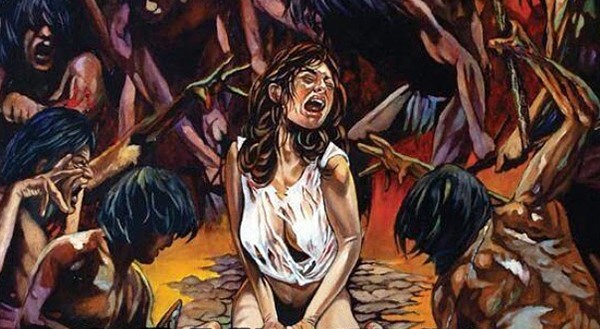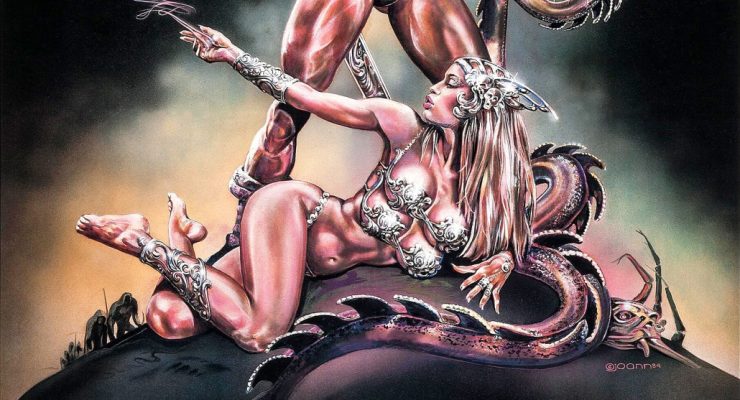Ricky Church reports on the Heat 20th anniversary screening and Michael Mann Q&A at Toronto International Film Festival…
One of the most groundbreaking crime dramas of its time, Heat celebrated its 20th anniversary at the Toronto International Film Festival with a screening of the film in a new 35mm print followed by a Q&A session with the director himself, Michael Mann.
This film was the first time ever legendary actors Al Pacino and Robert De Niro starred together on the big screen. They had previously starred in The Godfather Part II together, but did not appear alongside each other due to De Niro’s role as Vito Corleone in flashbacks. Heat changes that by casting De Niro as a cool as ice thief and Pacino the obsessed cop determined to take him down. During the course of the film, these two characters discover they are not so different from each other, culminating in an epic shootout on the streets of downtown Los Angeles that forces De Niro’s thief to choose between his code of self-preservation and a new life.
Before the film began, Michael Mann came out and introduced it with a few questions by the moderator. He talked about how this idea came to life from the true events of his friend, former police detective Chuck Adamson. Neil McCauley was based on a real life thief of the same name Adamson hunted down, yet talked to Mann about the mutual respect the two had for each other. He said “There was this wonderful duality about how Charlie thought it. And this guy was such a high-class professional thief, he was a great pro with a lot of discipline. His regard for the guy didn’t make Charlie hesitate for two seconds to hunt him down and eventually got into a shootout after a foiled robbery.”
“It wasn’t a contradiction of two different ways of being and thinking at all. Both were true and 100%. One didn’t diminish the other and that became the idea of the film”. Indeed, both Neil McCauley and Vincent Hanna, De Niro’s and Pacino’s respective characters, are protagonists of their own story and get an equal amount of time in the film. Mann continued later on that what really attracted him to Adamson’s story was “the notion that life is way more complex in reality than it is in my power to make up.”
Mann also talked about the funny similarities between how a detective and director thinks. “They actually do the exact thing a director does. A director knows his characters, understands his characters motivations, expresses those in what the character may do in a certain scene. The detective shows up after a crime has occurred, sifts through what’s been left for them, tries to reconstruct the event, tries to then figure out the motive and locate the character. For the people who are really good at this, it becomes an addiction.”
This is shown very well in the film as Pacino’s Hanna is completely taken over with his work. His marriage is facing its end because of Hanna’s refusal to open up about the dark side of his job with his wife, continuously letting it push him further away from a ‘normal’ life. Even Jon Voight’s character warns McCauley of this, noting that Hanna is on his third marriage and that only displays Hanna’s commitment to the job. Mann even admitted one of his favourite lines in Heat is when Hanna admits to his wife “All I am is who I’m going after”.
After the film, Mann came back out for an extended Q&A session, opening questions up to the audience. It was clear that even 20 years after this film was released it is still a beloved film and considered a favourite among Mann’s fans. The first question was about the notion of time in this film, specifically the line “Time is luck”. Mann said “Time is luck is what I believe. Personally, I find Neil to be a very tragic, heartbreaking character and I feel his expectations on what he wants to have in his life are tragically cut short. Time is luck and that’s why I keep repeating it in all these movies.”
He also explained where he got further inspiration for Heat and much of the imagery he used throughout the film and even some of his later films. Many fans of Heat probably know this story already, but Mann was very taken with a painting by Canadian painter Alex Colville depicting a man standing alone at a window, staring out into the ocean, with a gun sitting on the table behind him. This shot was used in an almost exact recreation as viewers see Neil McCauley coming home to an empty house, showing Neil’s life is bare of material things and human connection. “That was a profound sense of maintained, sustained alienation and loneliness. That’s how it affected me in the painting so I took great pains to recreate it.”
He also recalled a funny anecdote of when they first found the Malibu house that would become McCauley’s home, the window was covered in seagull poop (Mann used a less polite way of saying it), but he wanted it kept as it added to McCauley’s isolation. The next day, someone had cleaned it off not knowing Mann wanted it kept.
An interesting bit of history regarding this film was how, prior to 1995, it had been turned into a TV movie called L.A. Takedown. Mann had originally intended Adamson’s story to be a television series, following these characters over the course of a series. Mann revealed that he had written then script of Heat before L.A. Takedown, but used only about 40% of the script for the film. “I was interested in expanding all these characters and expanding their lives and imagined what it would be like over 22 hours.” After filming a pilot, NBC and Mann disagreed over certain aspects, so it premiered as a TV movie instead. Still keen to develop this project into a feature film Mann wisely kept ownership of the project and idea. He also admitted that it was “for the better” that this series did not make it to air.
An intriguing discovery during this panel was what some fans consider their favourite scene in Heat to be. While many critics point to the coffee scene between Pacino and De Niro as not only the best scene in the film, but one of the best scene in any film period, many fans agreed the final scenes between the two actors at the airport was their favourite. It is hard to deny that scene is one of the best in Heat as Hanna and McCauley give a final acknowledgement of their mutual respect with Moby’s “God Moving Over the Face of the Waters” playing over it.
Mann talked about the filming of this climax and how they were on location on the LAX runways to film the tense on foot chase. “It was fascinating because the plane were 250 feet over our heads. When they came through the ground shook and all the work we were all doing, myself, the actors, the crew, we were vibrating with the intensity of it. There’s something to be said for doing it for real. It’s not something you can do now, post-9/11.”
Explaining further, Mann stated that he was trying to find “something that came from the ordinary, material world that we’re all familiar with, but yet is so depopulated of life that it feels like a transient stage or feeling. It had to be feel very industrial or real. Airports at night make me feel that way, particularly those zones where people never go. There’s nothing about those buildings or architecture that are made for people.”
One of the final questions to be asked was about the shots and use of scenery. Heat is beautifully shot from start to finish with a lot of great scenery overlooking LA. For those who don’t know, Heat was filmed entirely on location with no sound stages at all, a process that is very costly and rarely done in today’s cinema. For instance, the epic firefight on the streets of LA was a somewhat difficult process as they could only film on weekends between certain hours. Heat also has, what may be considered today, a rather unconventional style of shooting where a scene ends on an object or out of focus.
“At the time, I was very interested in negative space and asymmetrical compositions and things that would subjectify the experience of the film. That was the one imperative that I wanted to do to. I wanted, to the extent that I could, bring audiences subjectively into moments and scenes and characters. For me, it comes with knowing exactly what you want to do, not necessarily how you’re going to do it, but knowing exactly what you want to do in as much detail as I could get.”
Mann concluded by saying “I think a lot of definition of moments in character comes from the anomalies so I started to look for what’s anomalous in a character’s behavior because that’s going to give him a lot of specificity of identity. I think audiences are way smarter than we know we are, perceptually we’re brilliant. I’ve always felt it’s my responsibility, my job, to use all these tools and constantly try to intensify the experience.” Asked to give an example of one these anomalies, Mann jokingly referred to Jon Voight’s hair and clothing in the film.
Heat is, without a doubt, one of the best films in cinema and arguably Mann’s best. His friendly and thoughtful persona is evident as is his appreciation for fans of this film. What’s more is the amount of knowledge he has on filmmaking, character studies and letting his actors create spellbinding performances. Even if you’ve seen Heat a dozen times, pop it in your Blu-ray player right now and if you haven’t, you have no idea what you’ve been missing from Robert De Niro, Al Pacino and, most especially, Michael Mann.
Ricky Church
https://www.youtube.com/watch?list=PL18yMRIfoszEaHYNDTy5C-cH9Oa2gN5ng&v=qvTY7eXXIMg











